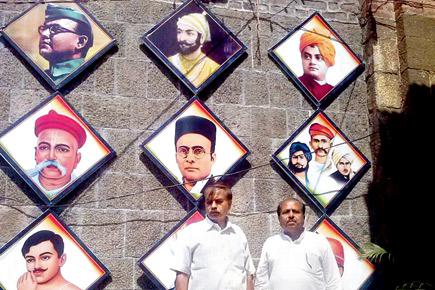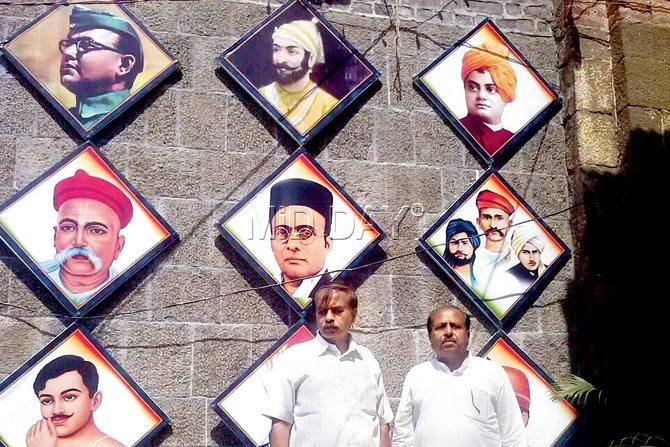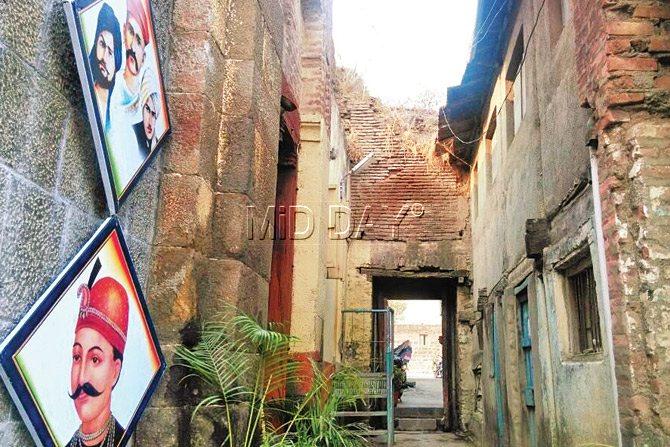The freedom fighter’s family wants to convert his ancestral home into a museum. Though govt has given its nod, the money hasn’t reached PWD

Rajguruu00c3u0083u00c2u00a2u00c3u0082u00c2u0080u00c3u0082u00c2u0099s house
The country may be commemorating the 85th year of the martyrdom of three legendry figures from India’s freedom struggle — Bhagat Singh, Sukhdev Thapar and Shivaram Rajguru — but, back home in Khed, where Rajguru was born, the ground reality tells a different story.
ADVERTISEMENT

Rajguru’s grandson Satyasheel (right) outside the house.
The family of Rajguru, who was hanged at the age of 23 for the assassination of a British Raj police officer, says work to make his home a museum and a knowledge centre has been stuck in red tapism for several years.
The ancestral wada at Khed, 40 kilometers from Pune, is a grand, stone structure which stands on the banks of Bhima river on the Pune-Nashik Road. It is a ground-plus-one structure and covers an area of 3,788 sq m. The 60,000 sq ft plot on which it stands also includes a protective stone wall, a grand arch door (dindi darwaza), the main residential structure (thorla wada), a prayer room, the room where Rajguru was born and a Hanuman temple built by Rajguru himself.

The ancestral home of the freedom fighter Satayasheel Rajguru in Khed stands on a 60,000 sq ft plot. PICS/Chaitraly Deshmukh
Satyasheel Rajguru, a businessman from Pune, is the great grandson of the freedom fighter. His grandfather, Dinkar, was Rajguru’s brother, said, “It was my grandfather’s dream to build a statue of Rajguru. He had been asking the government for help on this since 1983.”
In 2007, he said, the family took the decision of surrendering the entire property and wada to the government. “Our initial plan was to convert some space into a museum, a reading hall, an exercise area and a hostel for the underprivileged. This would help the government raise funds to maintain this property. However, the government wanted to convert this into a major tourist attraction and also build a Rajguru statue here. So, after a request in 2007, we handed the land to them,” said Satyasheel.

The two areas that have been restored are the room in which Shivaram Rajguru was born and the Hanuman temple he built
A fund of R1.48 crore was sanctioned for the same. However, only Rs 5 lakh was utilised to restore Rajguru’s room. Later, in 2014-15 Satyasheel said, the Archaeological Survey of India (ASI) conducted a survey and claimed that it would take Rs 54 crore to restore the entire structure. Later, the general elections were announced and the project was stalled since it would amount to being against election protocol. Last year, the state government sanctioned Rs 5 crore but the money hasn’t been handed over to the local PWD. Work is yet to begin.
Satyasheel added, “Citizens and political parties visit the house only on four occasion every year — Independence Day, Republic Day, August 24 (the birth anniversary of Rajguru) and March 23 (when he was executed). We have forgotten the legends who gave their lives for Mother India. Only 20 per cent of work has been completed and all that has been restored is the room where Rajguru was born and the temple. The rest is being allowed to rot.”
Khed’s Deputy Collector Himmatrao Kharade, said, “The money sanctioned was to help create a museum, restore the building, create two amphitheatres, gardens, a reading room and restrooms for tourists and also parking facilities. The amount of R5 crore was sanctioned in the 2015 Budget of the legislative assembly. The amount will take some time to be disbursed. At least, we have sanction for the initiative. We are planning to attract tourists from Punjab and Haryana and other fans of the three legends here.”
 Subscribe today by clicking the link and stay updated with the latest news!" Click here!
Subscribe today by clicking the link and stay updated with the latest news!" Click here!






